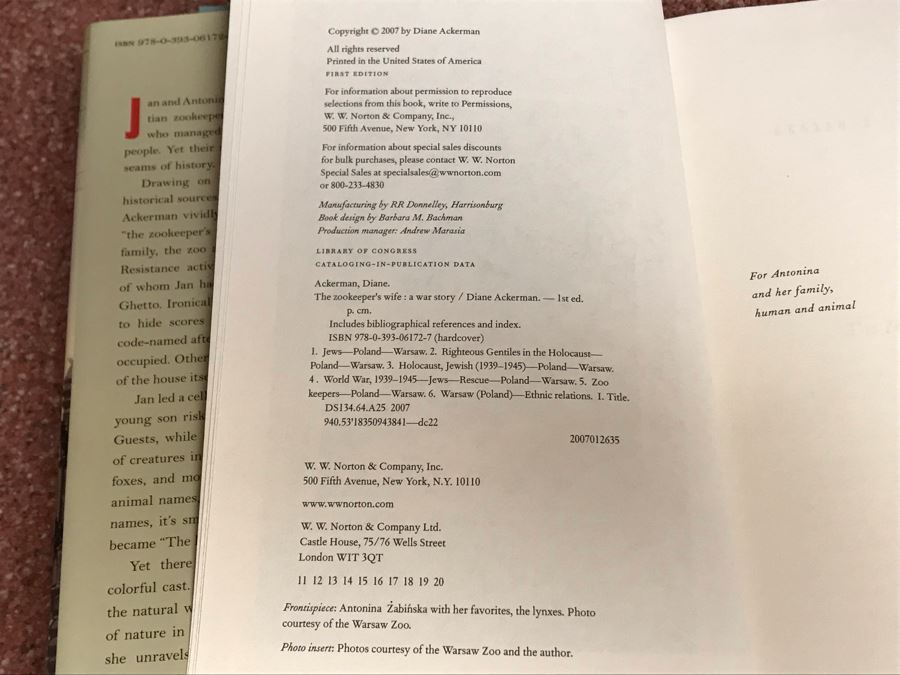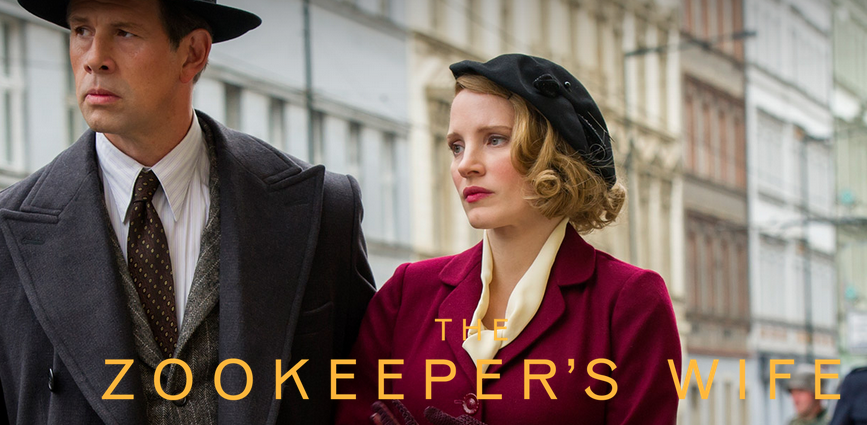


Also, as a nature lover, I was both fascinated and horrified by the Nazi plan to control the genetic destiny of the planet. According to her scientist husband, Jan, who prided himself on being cynical and a hard-nosed realist, Antonina viewed animals as cousins or alter-egos, and they responded to her with an almost magical trust. Most of all, I was drawn to Antonina, the zookeeper's wife, a woman of exceptional empathy and alert senses, who had a mysterious gift for calming ornery animals or people, including German soldiers. They also adopted many orphaned wild animals, which they raised (at times hilariously) inside their villa, and I found both the human and animal stories compelling. Ã"Ã"You're falling in love with this facet of life," its mind-ink reads, Ã"Ã"find out why, and engage it in words." And so I rejoined my quest where I'd left it, and layer by layer, a bizarre story began emerging that's as heartful as it is unlikely, a little-known drama of WWII, about two Christian zookeepers who risked their lives to save more than 300 Jews by hiding them at their zoo. That's how it always happens, a telegram from my subconscious slipped under the door of my awareness.

But over the next dozen years, miscellaneous facts, lore, insights and other mind-morsels began to accrete around the Polish horses and bison, until I woke up one day primed and coming down with a book.

I didn't know, when I proposed the story to my editor at National Geographic, that I was sharing some of Adolf Hitler and Hermann Goering's longing to revive extinct animals their obsession sprang from racist motives, but in one of those twists history is peppered with, it allowed good to triumph instead.Īs it turned out, National Geographic had a photographer sailing to French Frigate Shoals, in the Hawaiian archipelago, to chronicle the scant few remaining monk seals left on earth, and my editor dispatched me there. I'd also heard that the living fossils haunting this Polish preserve had something to do with Nazi perversity. The world of our early ancestors, with its giant bison, ur-horses, and other ribbed originals fascinated me, in part because in it animals occupied a niche where tasty and holy combined. She shows us how Antonina refused to give in to the penetrating fear of discovery, keeping alive an atmosphere of play and innocence even as Europe crumbled around her.Two by two: a wartime rescue of people and animals Decades ago, I proposed an essay for National Geographic that would carry me into the primeval forest skirting Poland's border with Belarus, to witness animals of the sort paleolithic artists once painted in ochre on the cave walls at Lascaux. Meanwhile, Antonina kept her unusual household afloat, caring for both its human and its animal inhabitants-otters, a badger, hyena pups, lynxes.With her exuberant prose and exquisite sensitivity to the natural world, Diane Ackerman engages us viscerally in the lives of the zoo animals, their keepers, and their hidden visitors. Jan, active in the Polish resistance, kept ammunition buried in the elephant enclosure and stashed explosives in the animal hospital. Another dozen "guests" hid inside the Zabinskis' villa, emerging after dark for dinner, socializing, and, during rare moments of calm, piano concerts. With most of their animals dead, zookeepers Jan and Antonina Zabinski began smuggling Jews into empty cages. When Germany invaded Poland, Stuka bombers devastated Warsaw-and the city's zoo along with it. The New York Times bestseller soon to be a major motion picture starring Jessica Chastain.Ī true story in which the keepers of the Warsaw Zoo saved hundreds of people from Nazi hands.


 0 kommentar(er)
0 kommentar(er)
